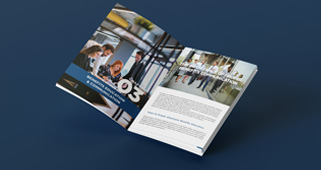Employee retention is crucial for the long-term success and stability of any organization. High turnover rates not only increase recruitment and training costs but also disrupt workflow and can negatively affect team morale. In today’s competitive job market, retaining top talent has become more challenging than ever. To address this, employers need to implement effective retention strategies that meet the evolving needs and expectations of their workforce. Here, we discuss five key strategies that can help organizations retain their valuable employees.
1. Foster a Positive Workplace Culture
Creating a Supportive Environment:
A positive workplace culture is the foundation of employee retention. When employees feel valued, respected, and part of a supportive community, they are more likely to remain loyal to their organization. Employers can foster such an environment by promoting open communication, encouraging collaboration, and recognizing individual contributions.
Recognition and Rewards:
Regularly acknowledging and rewarding employees for their hard work and achievements can significantly boost morale and job satisfaction. This doesn’t always have to be monetary. Public recognition, additional responsibilities, professional development opportunities, and small perks can also be very effective.
Inclusivity and Diversity:
A diverse and inclusive workplace where everyone feels welcome and valued can greatly enhance employee satisfaction and loyalty. Implementing policies that promote diversity, equity, and inclusion can help create a more positive and engaging work environment.
2. Provide Opportunities for Career Growth
Professional Development Programs:
Investing in employees’ professional growth shows that the organization values their career aspirations. Offering training programs, workshops, and courses can help employees acquire new skills and advance in their careers. Employers should also provide access to mentors and career coaches.
Clear Career Paths:
Employees are more likely to stay with a company if they see a clear path for career advancement. Employers should regularly discuss career goals with their employees and provide them with opportunities to take on new challenges and responsibilities. Creating a roadmap for progression within the company can motivate employees to stay and grow with the organization.
Promotions and Internal Mobility:
Encouraging internal mobility by promoting from within not only boosts employee morale but also ensures that institutional knowledge is retained. By filling positions with existing employees who are familiar with the company’s culture and operations, organizations can maintain continuity and reduce the learning curve associated with hiring externally.
3. Offer Competitive Compensation and Benefits
Competitive Salaries:
Compensation is a significant factor in employee retention. Regularly reviewing and adjusting salaries to ensure they are competitive within the industry can prevent employees from seeking higher pay elsewhere. Conducting salary surveys and benchmarking against industry standards can help employers stay competitive.
Comprehensive Benefits Packages:
Beyond salary, a comprehensive benefits package is crucial for employee satisfaction. Health insurance, retirement plans, paid time off, and wellness programs are highly valued by employees. Additionally, offering flexible benefits that cater to individual needs, such as childcare assistance or mental health support, can make a big difference.
Bonuses and Incentives:
Performance-based bonuses and incentives can motivate employees to stay and perform at their best. These incentives can be tied to individual, team, or company-wide goals and achievements. Providing financial rewards for exceptional performance demonstrates that the organization recognizes and values its employees’ contributions.
4. Promote Work-Life Balance
Flexible Work Arrangements:
Offering flexible work arrangements, such as remote work, flexible hours, or compressed workweeks, can greatly enhance employee satisfaction and retention. Flexibility allows employees to better manage their personal and professional lives, reducing stress and burnout.
Paid Time Off:
Generous paid time off policies, including vacation days, personal days, and sick leave, show that the organization values employees’ well-being. Encouraging employees to take their allotted time off can prevent burnout and improve overall job satisfaction.
Work-Life Integration:
Promoting work-life integration, where employees are encouraged to prioritize their personal lives and responsibilities alongside their professional duties, can lead to a healthier and more balanced workforce. Employers can support this by offering wellness programs, family-friendly policies, and a supportive work environment.
5. Enhance Employee Engagement and Communication
Regular Feedback and Reviews:
Providing regular feedback and conducting performance reviews can help employees understand their strengths and areas for improvement. Constructive feedback, when delivered in a supportive manner, can motivate employees to grow and improve within the company.
Employee Surveys and Feedback Channels:
Conducting regular employee surveys and maintaining open feedback channels allows employees to voice their opinions, concerns, and suggestions. This not only helps in identifying potential issues but also makes employees feel heard and valued. Acting on the feedback received can lead to improvements that enhance the overall work environment.
Team Building Activities:
Organizing team-building activities and social events can strengthen relationships among employees and create a sense of camaraderie. These activities can range from team lunches and outings to more structured events like retreats and workshops. Building strong, positive relationships within the team can increase job satisfaction and loyalty.
Conclusion
In today’s competitive job market, retaining top talent requires a proactive and multifaceted approach. By fostering a positive workplace culture, providing opportunities for career growth, offering competitive compensation and benefits, promoting work-life balance, and enhancing employee engagement and communication, employers can create an environment where employees feel valued, supported, and motivated to stay. Implementing these strategies not only helps in retaining employees but also contributes to a more productive, satisfied, and engaged workforce, ultimately driving the long-term success of the organization.
Implementing Retention Strategies: Best Practices
To effectively implement the above strategies, employers should consider the following best practices:
Conduct Regular Assessments:
Regularly assess the effectiveness of your retention strategies by gathering data and feedback from employees. This can be done through surveys, exit interviews, and performance metrics. Use this data to make informed decisions and adjustments to your strategies.
Customize Approaches:
Recognize that different employees may have different needs and preferences. Customize your retention strategies to address the unique requirements of various employee groups, such as entry-level employees, mid-career professionals, and senior leaders.
Lead by Example:
Leadership plays a crucial role in shaping workplace culture and influencing employee behavior. Leaders should model the behaviors and values they wish to see in their employees, such as open communication, respect, and a commitment to work-life balance.
Communicate Clearly:
Ensure that all retention initiatives and policies are clearly communicated to employees. Transparency about career growth opportunities, compensation structures, and organizational goals can help build trust and commitment.
Monitor and Adapt:
The workplace and the workforce are constantly evolving. Regularly review and adapt your retention strategies to stay aligned with changing employee expectations, industry trends, and organizational goals.
By integrating these best practices with the core retention strategies, employers can create a dynamic and supportive work environment that attracts and retains top talent, driving long-term success and growth for the organization.






